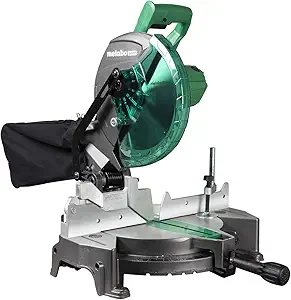The Ultimate Buying Guide for Miter Saws
Overview
A miter saw is a versatile power tool that can make precise angled cuts for a variety of woodworking projects. Whether you're a professional carpenter or a DIY enthusiast, a miter saw is an essential tool to have in your workshop. However, with so many types and features available, it can be challenging to choose the right one for your needs. In this buying guide, we'll explore the different types of miter saws, key considerations to keep in mind, important features to look for, and tips for safe use.
Types
There are four main types of miter saws: standard miter saws, compound miter saws, sliding compound miter saws, and dual bevel sliding compound miter saws.
1. Standard Miter Saw: A standard miter saw is the simplest type of miter saw and can make straight crosscuts and angled cuts up to 45 degrees. It's best for simple woodworking projects and DIY home improvement tasks.
2. Compound Miter Saw: A compound miter saw can make angled cuts in two directions: bevel and miter. It's ideal for cutting crown molding, baseboards, and other angled cuts.
3. Sliding Compound Miter Saw: A sliding compound miter saw can make all the cuts that a compound miter saw can make, but with the added feature of a sliding arm that allows you to cut wider boards.
4. Dual Bevel Sliding Compound Miter Saw: A dual bevel sliding compound miter saw can make all the cuts of a sliding compound miter saw, but with the added feature of a dual bevel that allows you to tilt the blade in both directions. It's ideal for professional carpenters and woodworkers who need to make precise cuts at different angles.
Key Considerations
When choosing a miter saw, there are several key considerations to keep in mind:
1. Blade Size: The blade size of a miter saw determines the maximum cutting capacity. Most miter saws come with 10-inch or 12-inch blades, but some models have larger or smaller blades.
2. Motor Power: The motor power of a miter saw determines how easily it can cut through different types of wood. Look for a motor with at least 15 amps of power.
3. Bevel Angle Range: The bevel angle range of a miter saw determines how far the blade can tilt to make angled cuts. Look for a miter saw with a bevel angle range of at least 45 degrees.
4. Miter Angle Range: The miter angle range of a miter saw determines how far the blade can tilt to make angled cuts. Look for a miter saw with a miter angle range of at least 45 degrees.
5. Dust Collection: A miter saw with a dust collection system can help keep your workspace clean and reduce the risk of respiratory issues.
Features
Here are some important features to look for when choosing a miter saw:
1. Laser Guide: A laser guide projects a beam of light onto the workpiece to help you make precise cuts.
2. LED Light: An LED light illuminates the workpiece and blade, making it easier to see the cutting line.
3. Fence System: A fence system helps keep the workpiece in place and ensures accurate cuts.
4. Cutting Capacity: The cutting capacity of a miter saw determines the maximum width and thickness of the workpiece it can cut.
5. Portability: If you need to move your miter saw around frequently, look for a lightweight and portable model.
Prices
Miter saws can range in price from under $100 to over $1000. Keep in mind that higher-priced models often come with more advanced features and better build quality.
Tips
Here are some tips for safe and efficient use of your miter saw:
1. Always wear eye and ear protection when using a miter saw.
2. Keep your hands away from the blade and use a push stick to guide the workpiece.
3. Check the blade alignment and bevel angle before making any cuts.
4. Use a dust mask or respirator to protect against sawdust.
FAQs
Q: Can I use a miter saw to cut metal?
A: No, miter saws are designed for woodworking and should not be used to cut metal.
Q: Can I use a miter saw to cut plastic?
A: Yes, a miter saw can be used to cut plastic, but you'll need to use a blade specifically designed for cutting plastic.
Q: How often should I change the blade on my miter saw?
A: It depends on how often you use your miter saw and the type of wood you're cutting. As a general rule, you should change the blade when it becomes dull or damaged.
Q: How do I maintain my miter saw?
A: Regularly clean the blade, table, and dust collection system, and check the blade alignment and bevel angle. Lubricate the moving parts as necessary.














